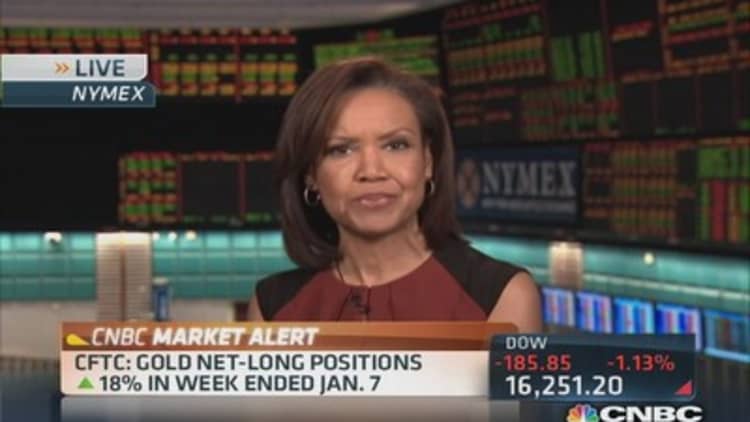Despite ongoing and unpredictable turmoil in the Middle East, analysts say oil is heading lower in 2014.
Over the last several weeks, crude has been whipsawed by conflicting expectations out of the Middle East: Iran is seen as potentially increasing exports as it reaches a deal that curbs its nuclear ambitions, but at the same time, instability in Iraq and Libya have knocked more than 1 million barrels per day (bpd) of oil offline.
Where to next? Forecasts for crude, gas, and natgas: Goldman
Source: Source: Goldman Sachs Global Investment Research
Regardless of whether violence in the Middle East takes a toll on supply, analysts say structural factors argue against crude moving higher from current levels. With or without the addition of Iranian supply, production elsewhere is expected to remain fairly consistent.
"At the end of the day, despite all the turmoil in a lot of these markets ... production doesn't necessarily get curtailed," said Farid Guindo, the founder of alternative asset manager Drill Capital.
Guindo, who said he was "very comfortable" with a forecast of West Texas Intermediate near $85 per barrel, and a $90-$100 range for Brent, added that "it all boils down to fundamentals"—which at this point point to lower crude prices.
(Read more: US energy boom is as big as the Internet: Rahm Emanuel)
Despite short-term supply bottlenecks, energy market watchers said the market for crude remains oversupplied as global growth remains sluggish. Goldman Sachs points out that demand is shifting away from hungry emerging markets and back to developed nations.
"Being that developed markets are less commodity-intensive, that is a bearish dynamic," said Jeff Currie, Goldman's head of commodities in an interview on CNBC's "Squawk on the Street." Most developed economies are still grappling with uneven growth, making demand questionable.
"Couple that with normalization and supply ... and it creates a lot of downside risk," Currie added.

Playing in the background is the surge in U.S. production, which analysts believe is restraining market dynamics. A domestic shale boom is slaking demand in the United States and keeping markets oversupplied. The International Energy Agency has forecast that U.S. oil production will soar to more than 11 million barrels a day by 2020.
In a recent research note, Bank of America-Merrill Lynch said strong output from both non-OPEC and OPEC producers would cap the market. "We see Brent prices averaging $105 bpd in 2014, dipping to $90 at some point," the note said.
In the U.S., "strong shale oil production growth spells regional pipeline, refining and storage bottlenecks," the bank said—adding that it even sees an outside risk of WTI sinking as low as $50 sometime over the next two years.
In the short term, "you get pressure on pricing, but in the long term you go back to fundamentals," said Drill Capital's Guindo. "We think there's more supply than demand going forward."
—By CNBC's Javier E. David. Follow him on Twitter @TeflonGeek


